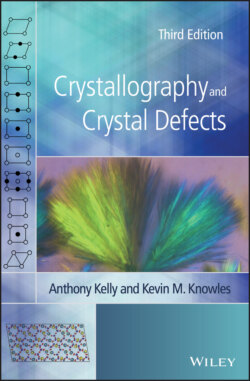Читать книгу Crystallography and Crystal Defects - Anthony Kelly - Страница 50
2.17 Frequency of Space Groups in Inorganic Crystals and Minerals
ОглавлениеAlthough there are 230 space groups, analyses of the crystal structures of organic compounds and inorganic crystals and minerals show that these structures clearly favour some space groups over others. Thus, for example, almost of inorganic crystal structures belong to one of 24 space groups [21]. For organic compounds just two space groups, P21/c and , account for over half the crystal structures solved by 1990 [22], while for monomeric proteins, the space group P212121 accounts for almost one third of crystal structures solved by 1995 [23]. Packing and entropic considerations of atoms and molecules, discussed in Chapters 3 and 4, both help to rationalize these observations [21–23]. The consequence of these observations and considerations is that some space groups are markedly less important than others for crystal structure determination [21]. In this context, the choice of Pnma, No. 62, as the three‐dimensional space group to highlight in Section 2.16 is deliberate – this space group is the most frequent space group found in inorganic crystals and minerals, accounting for just over 7% of all crystal structures [21], and it is relatively easy to represent in two dimensions in terms of information in the form of diagrams and symmetry data.
